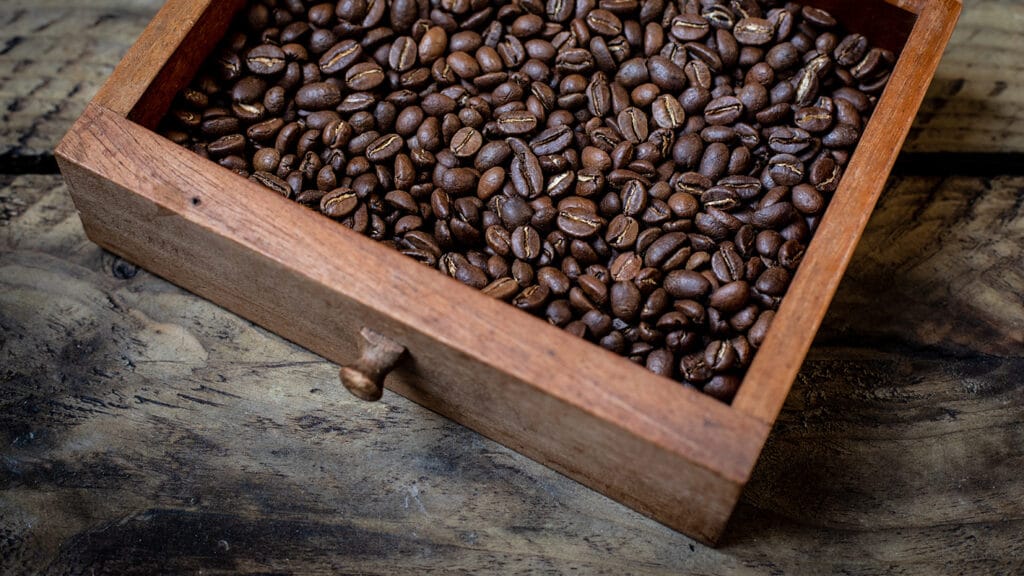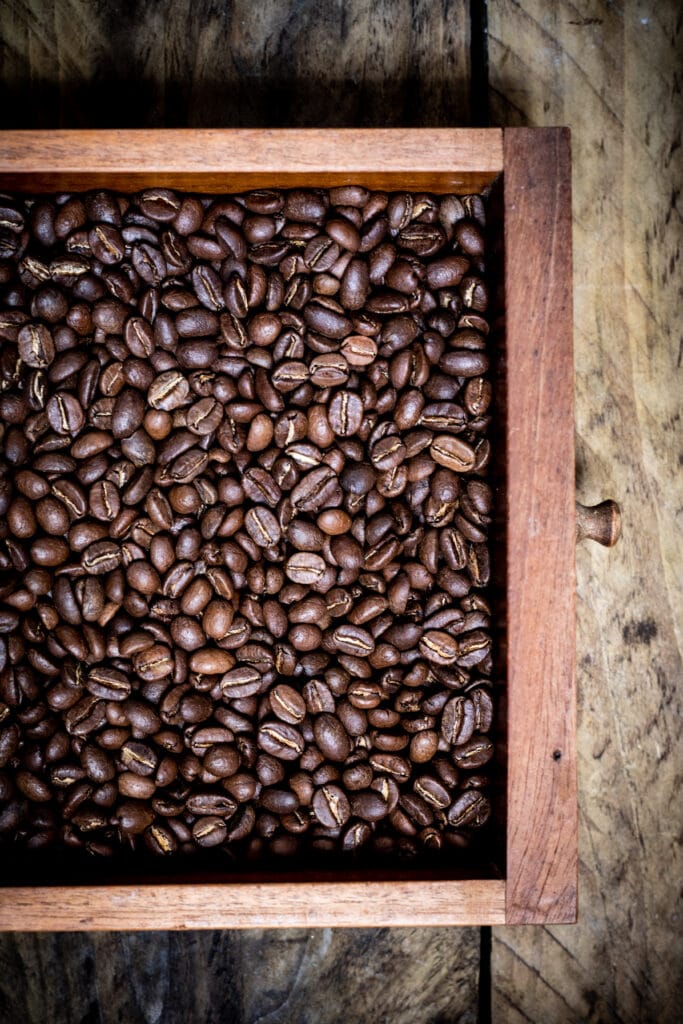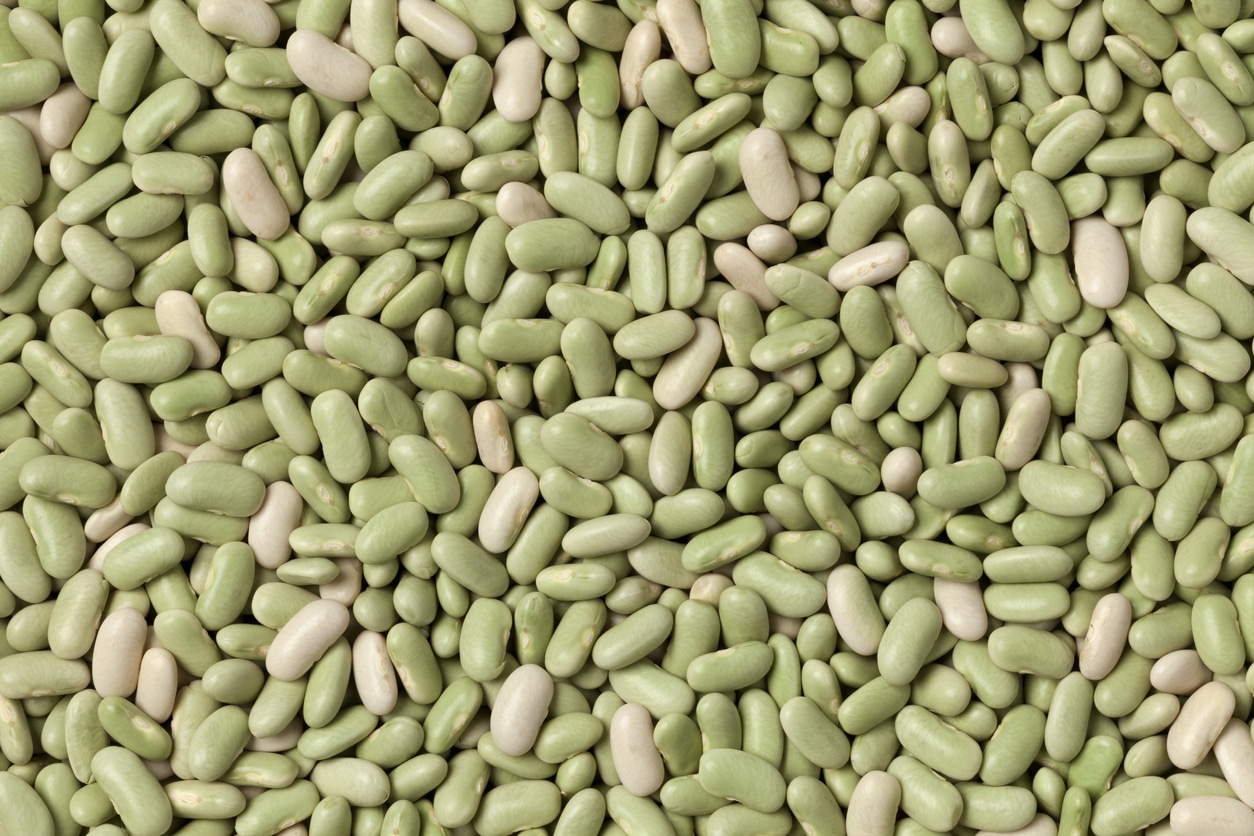Cupboard love: coffee beans
Ed Smith explores the essential components of his kitchen cupboard. This time: coffee beans


“YOU’LL SEE RECIPES USING COFFEE GRINDS IN RUBS FOR DEEP SOUTH-STYLE MEATS OR IN BRAISING LIQUORS AND BRINES”
Image: Regula Ysewijn
Coffee doesn’t get the respect it deserves. So often, it’s in our consciousness because of its role as a stimulant, rather than its potential as an ingredient. If I had a coffee bean for every time I heard or read “I can’t do anything before my first coffee” or a variant on that theme, well, I’d be in beans for the rest of my life.
As it happens, my store cupboards are usually well appointed with coffee. By and large that’s to suit my morning ritual, but those beans also have a place in my kitchen as a way of adding flavour to food. There are, of course, a few classic dishes that require coffee: tiramisu, mocha-style coffee and chocolate pots, coffee ice cream. But the modern home cook can think beyond those. Coffee is superb as either the star or supporting act in anything frozen (ice cream, sorbet, lollies, granita), anything chocolatey and cakey (tarts, brownies, fondants, cupcakes, layer cakes, sponges), and anything involving cream or dairy (panna cotta, flavoured creams and butters to go with or on top of the aforementioned cakey things).

There are also some unconventional but surprisingly pleasing matches. Niki Segnit, author of The Flavour Thesaurus, pitches coffee with blackcurrant, cherry and orange – blood, burnt or marmaladed. And you shouldn’t be surprised to see recipes using coffee grinds in rubs for Deep South-style meats (for pork ribs, chops or butts; beef brisket or steak), often in the company of things like paprika and chilli, or in braising liquors and brines. Here, the coffee tends to offer a savoury background note, adding a richness that’s not necessarily noticeable until it’s pointed out. Similar to how you might add Marmite or soy sauce to a stew or marinade – it’s there, it makes the dish better, but it doesn’t (or shouldn’t) dominate.
To my mind ‘coffee’ is a flavour that food writers and recipe developers need to be more specific about. In sweet dishes in particular, where they’re a key flavour, the coffee used by the home cook is likely to be vital to the success of the dish – what, specifically, should the user of the recipe be looking for? Is the coffee instant, espresso-based or filter brewed? What are the characteristics of the beans that the writer used? Where in the world are they from? How were they roasted? We write ‘milk’ or ‘dark’ chocolate (at the very least); ‘dry’ or ‘off-dry’ white wine. We should be more specific about coffee types, too. To be honest, we could be even more specific on the chocolate and wine fronts as well.
At Borough Market you can see, smell and taste variances in coffee first hand – go to the front counter at Monmouth Coffee, for example, where there are big buckets of beans from Kenya, Rwanda, Ethiopia, Nicaragua and beyond. A few moments choosing beans there is time well spent – if you find yourself a fan of their Costa Rican beans, you’ll probably discover that beans from that country always hit the spot. That said, different coffee beans grown within the same country will have different characteristics – like grapes, coffee berries and the resultant beans vary dramatically dependent on variety, terroir, altitude and climate. I have recently been working my way through beans roasted by The Colombian Coffee Company. All their beans are from the same country, obviously, but they sell a number of different varieties, each grown on different soils and at different altitudes. Typica – with honey and caramel notes – would be perfect as the flavouring for a panna cotta or ice cream. The borbón is strong, forthright, a little bit chocolatey, and ideal in a cake. Caturra and yellow caturra (my favourite) are acidic, almost tart, with hints of things like grapefruit and passionfruit – spot on, in my opinion, for a filter-style coffee, served black, or indeed for an iced dish; something pure and unsullied by chocolate or cake crumb. Try using these beans in a granita (effectively the ultimate iced coffee), piled on top of light and voluminous coffee cream, itself piled on top of whichever Borough Market brownie you like the most.


